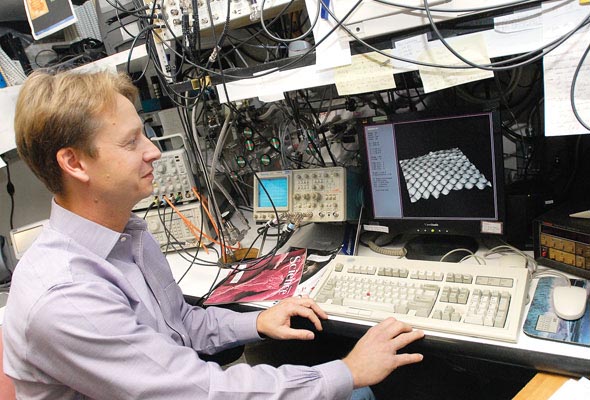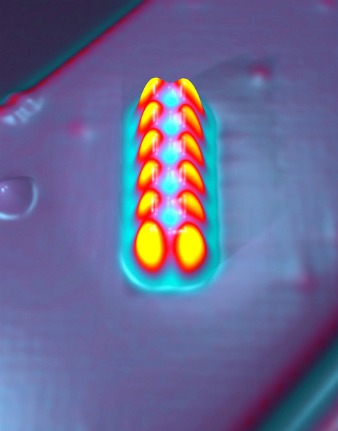IBM Research has successfully stored one magnetic bit of data with just 12 atoms of iron, and a full byte of data in 96 atoms. This represents a storage density that is at least 100 times denser than the largest hard drive platters or flash memory chips.

The team, led by Andreas Heinrich of IBM Research Almaden (California), began their search for the smallest magnetic bit from the bottom up. Instead of starting with a known storage medium and looking for a way to improve it – the standard approach governed by Moore’s law – Heinrich and his team started from the smallest possible unit – an atom – and built their way up until the smallest, stable magnetic bit was achieved.
 |
| Andreas Heinrich: «This (the STM) lets you see anything» |
Heinrich & Co. literally built up an array of iron atoms on a copper substrate, one at a time, until the iron atoms reached “critical storage mass” – enough atoms to stably retain their magnetism. At low temperatures, this number is 12; at room temperature, the number is around 150.
Heinrich did his work using a scanning tunneling microscope (STM), something that IBM researchers invented 30 years ago, which allows them to see and move around atoms.
First the STM is used to arrange the iron atoms on the copper substrate – a relatively easy task, Heinrich tells us. Then the STM is used to measure the magnetism of a given atom to see if the magnetic bit has a binary value of 0 or 1. This is slightly trickier than it sounds and requires the use of antiferromagnetism. On a hard drive, which uses ferromagnetism, every atom of a magnetic bit faces the same direction, creating a magnetic field (“north”, “south”) that is measured by the head and turned into a binary value. The problem with this is that you need thousands or millions of ferromagnetic atoms to create a large enough magnetic field. With antiferromagnetism, the atoms of a magnetic bit are aligned in such a way that the sum magnetic field is zero.
 |
| Scanning tunneling microscope image of twelve iron atoms that were assembled into an atomically precise antiferromagnet (source: IBM Research) |
With an antiferromagnetic bit, if you flip a single iron atom with an STM, every other atom switches to maintain the equilibrium.
The challenge now, though, is to find a way of mass-producing sheets of copper with arrays of precisely-aligned iron atoms. You wouldn’t technically need a room-sized STM to manipulate these atom-sized bytes, but we would need to find a way of attaching wires to these tiny structures.
